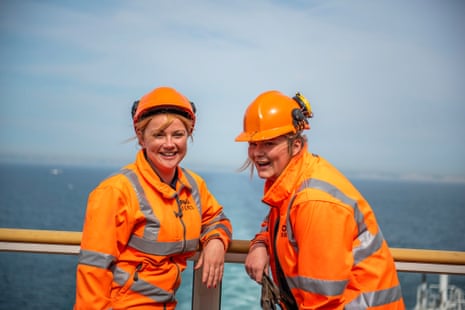An apprenticeship is daunting for anyone. But what about when you’re a woman about to enter a sector that’s stereotypically male-dominated? According to government figures, 49% of apprenticeship starts in 2017/18 were by women and 51% by men – the first time that more apprenticeships had been started by men than women since 2009/10. That may sound like it isn’t an issue, but that’s not the whole picture. A report in 2017 by the Young Women’s Trust not only highlighted that male apprentices earned more than women - £7.25 vs £6.67 per hour - but women apprentices are also focused in relatively few sectors. “In key sectors such as engineering men outnumber women 25 to one,” it warned.
It’s a situation Evie Hammond, in her third year of an apprenticeship as an instrumentation, control and automation (ICA) engineer at Severn Trent, witnessed first-hand. The 21-year-old, from Coleshill, West Midlands, had taken A-levels but decided university wasn’t for her. Her interest in electrical engineering led her to apply for an instrumentation apprenticeship at Severn Trent but it was only when she got to the group assessment stage that the reality of being a woman hit her. “I expected going into engineering it would be male-dominated but I didn’t realise quite how male-dominated it would be.”
Hammond, who did her training at the Make UK Technology Hub, said: “I’m the only girl on the teams I’m in but they don’t treat me any differently. Some of the jobs are physically challenging, but I get the same chances as everyone else.” She may be accepted at work but admits she encounters raised eyebrows when people hear she works at a sewage treatment works. “I’ve had it before when I say: ‘I’m an engineer’, and I’m told: ‘No you’re not, you’re female.’”

She’s not alone. When Tia Boulton-Crowe, 21, from Staffordshire, embarked on an apprenticeship in land-based technology, including working with farm machinery, not everyone was accepting. “There was a lot of judgment before people really knew who I was and what I knew. It was only the minority and once I proved myself I gained so much respect.”
Of course, there are physical challenges too – something maritime apprentice Stacy Gregory experienced. Her chosen industry is no stranger to gender imbalance, with 2% of seafarer positions held by women. Gregory, who recently graduated from P&O Ferries’ Apprenticeship scheme, says: “There was a lot of manual handling involved, which was a bit of a struggle, like pulling heavy ropes along decks and throwing heaving lines. I definitely feel you have to prove yourself more as a woman in a male-dominated industry. I just had to get stuck in.”

Getting stuck in is exactly what got welder Chloe Sales, 24, from Staffordshire, her apprenticeship in the first place. Sales, who was named Stem Apprentice of the Year by Stoke-on-Trent College – where she was the only apprentice female welder – earlier this year, says: “I was working in a warehouse and they were short on welders so I said: ‘Will you let me have a go?’” She enjoyed it so much she planned to put herself through a college course – prompting her then-employer to offer her an apprenticeship. For her, the fear is that being a woman will mean she’s treated differently. “When I first started I think they were nice to me because I was a girl but when I’d been there a few months I said: ‘Give me some of the rubbish jobs.’”
It’s clearly possible for women to take on roles in male-dominated areas, but could it be easier? The Young Women’s Trust report called for the government to consider additional payments for employers recruiting women apprentices in male-dominated sectors and said employers should make “greater use of positive action”, including setting targets, reserving places on training courses and adapting language used in job adverts.
One company actively trying to attract more women is Govia Thameslink Railway (GTR). In the UK, just 5% of Britain’s 19,000 train drivers are women – something GTR is trying to change. Its target is that by 2021 at least 40% of applicants for train driver roles will be female and its steps to achieve this include a school outreach programme, all-female assessment centres for trainee drivers and a Women’s Network Group that pairs up new female recruits with another woman in the company.
But for some female apprentices success is more dependent on their own mindset rather than external influences. “As a woman in this type of career you have to be able to hold your own, have a good sense of humour, laugh at yourself and definitely be strong willed,” says Gregory. Boulton-Crowe agrees. “It was daunting being a female going into a ‘man’s world’ but I learned so much, I became a stronger and more confident individual. Apprenticeships are a great way to get your foot in the door – you’re learning while having a wage and in some cases dropped completely in the deep end, but it’s 100% the best way to learn, as scary as it is!”
